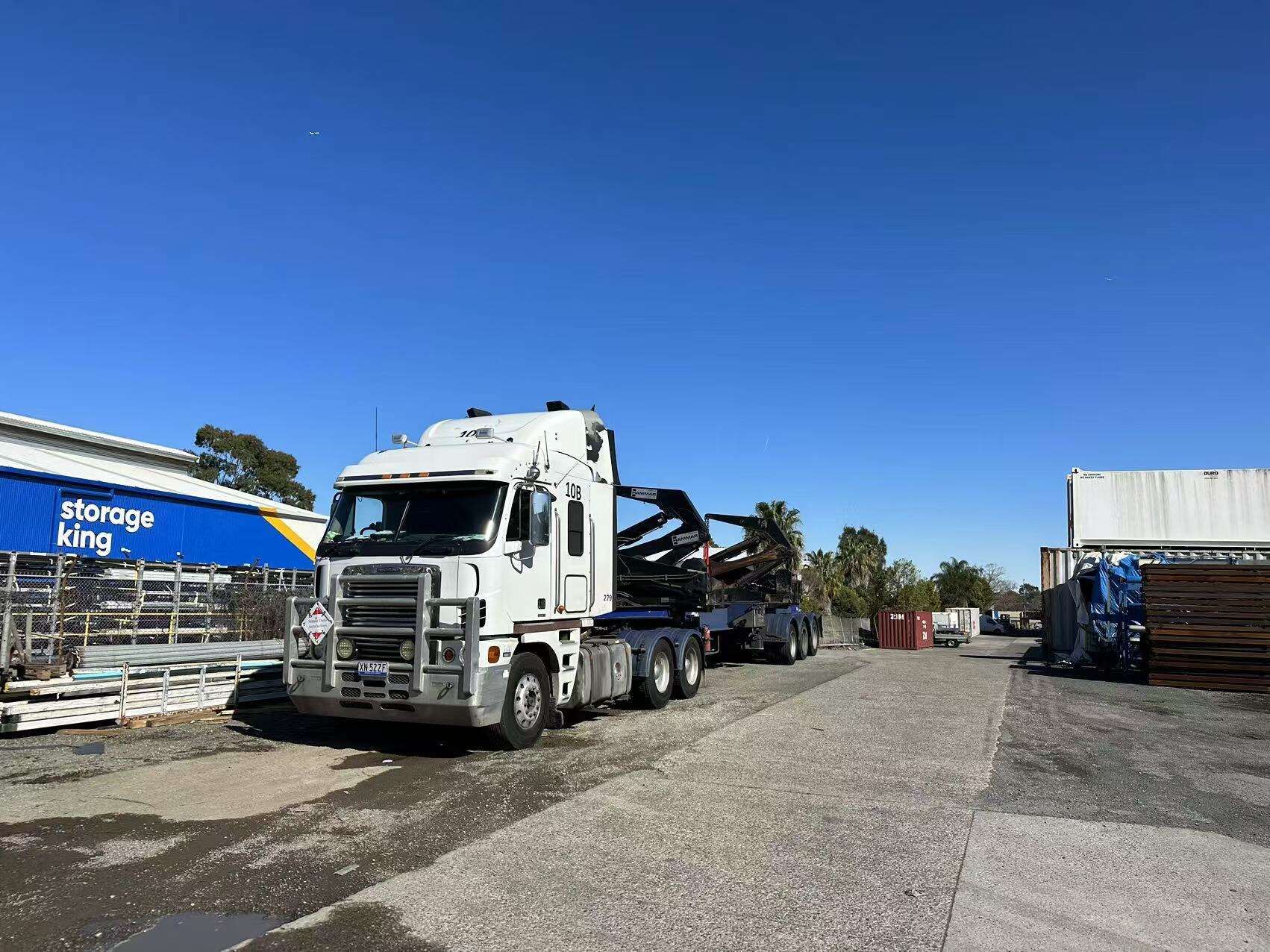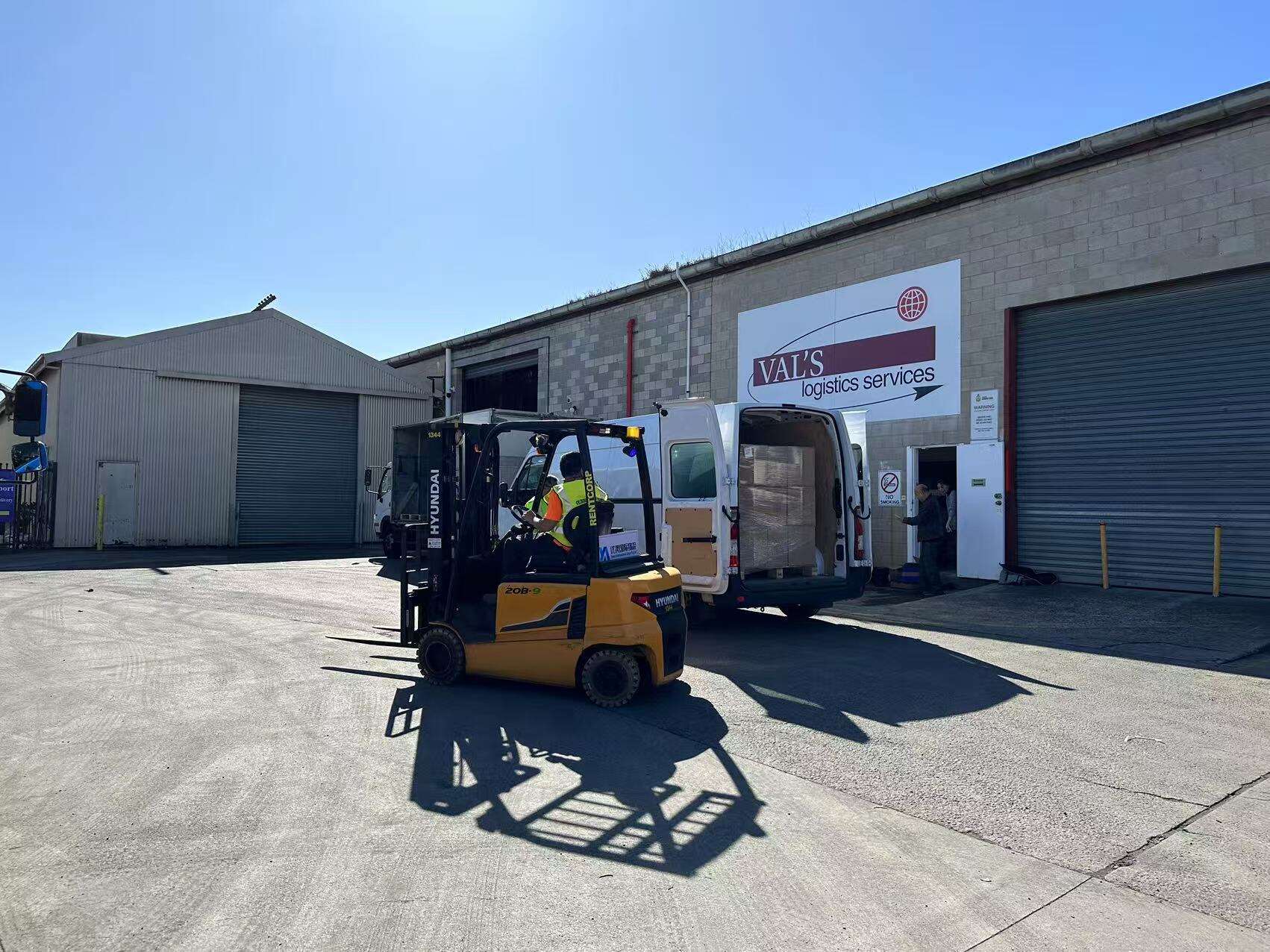Navigating Capacity Constraints in LCL Freight
Understanding Space Allocation Challenges
Navigating the capacity constraints in LCL (Less than Container Load) freight requires a keen understanding of the global landscape, where container availability is increasingly shaped by international trade dynamics. Fluctuations in global demand and geopolitical tensions often lead to a scarcity of containers, exacerbating space allocation challenges. During peak shipping seasons, such as the pre-Christmas rush or post-Chinese New Year period, these issues intensify as the demand surges dramatically.
Seasonal demand fluctuations can pose significant hurdles for shippers, with container spaces often insufficient to meet the heightened demand. This seasonal surge often leads to severe port congestion and shipping delays. Recent data has shown that such delays have impacted about 30% of shipments worldwide in critical months, underscoring the need for strategic planning.
To navigate these challenges, it is crucial for businesses to keep abreast of current trends and anticipate potential delays, ensuring efficient load management and timely delivery. By analyzing these patterns, companies can better prepare and mitigate potential disruptions to their supply chains.
Strategies for Securing Container Space
Securing container space amidst capacity constraints involves adopting several effective strategies. One proven approach is early booking and maintaining flexibility in scheduling. Bookings made well in advance can help secure the necessary space and also lock in more favorable rates. Additionally, flexibility with shipping dates can provide opportunities to leverage unexpected space openings.
Establishing long-term partnerships with reliable freight forwarders is another critical strategy. Such partnerships facilitate smoother negotiations and ensure a consistent supply of container space, even during peak periods. Freight forwarders, with their extensive networks and industry expertise, can provide insights and alternative routes to accommodate shipments.
Real-world examples highlight the importance of these strategies. For instance, many companies have successfully navigated tight shipping schedules by aligning with robust freight networks, ensuring uninterrupted service despite challenging market conditions. These strategies underscore the importance of proactive space management and collaboration in overcoming capacity constraints.
Leveraging Freight Forwarder Networks
Leveraging strong freight forwarder networks is essential for optimizing resource allocation and improving shipping timelines. Freight forwarders provide access to their comprehensive networks, enabling shippers to connect with multiple partners and service offerings. This extensive connectivity ensures that shipments are managed efficiently, minimizing downtime and avoiding bottlenecks.
Modern tools and platforms have enhanced the ability to engage with various freight forwarders seamlessly. Digital platforms provide shippers with options to compare offerings and availability, ensuring optimal logistics solutions tailored to their specific needs. These tools improve communication and coordination, leading to time and cost savings.
Data on businesses utilizing these networks highlights significant productivity improvements and streamlined operations. Companies report enhanced flexibility and reliability in their shipping processes, illustrating the tangible benefits of integrating strong freight forwarder networks into their logistics strategy. This approach not only boosts efficiency but also equips businesses to handle future challenges with greater agility.
Overcoming Documentation and Regulatory Hurdles
Common Documentation Errors in LCL Shipping
Within LCL shipping, common documentation errors such as inaccurate invoices or missing bills of lading can derail the shipping process. Often, these oversights lead to delays and increased costs. According to industry experts, compliance is paramount, and failure here can see shipping schedules thrown off course, resulting in hefty fines. Moreover, statistics indicate that even minor documentation errors can lead to a 10-15% increase in shipping delays, further inflating costs due to unnecessary storage fees or missed delivery deadlines.
Automating Compliance Processes
Automation stands out as a pivotal solution in addressing documentation and regulatory compliance issues in LCL shipping. By leveraging technology, businesses can automate paperwork, reducing the chances of manual errors and expediting customs processing. For example, software solutions like TradeLens and Descartes offer comprehensive compliance management systems. These platforms not only streamline document management but can also be integrated into existing systems to facilitate faster operational workflows, which means reduced delays at customs and more effective freight shipping from China to Canada, among other destinations.
Best Practices for Customs Clearance
Adopting best practices is vital for seamless customs clearance in LCL shipping. Proactively communicating with customs authorities and maintaining accurate records minimize clearance delays. It is essential to provide complete documentation promptly. Customs brokers play a crucial role in facilitating efficient processes by bringing their industry expertise to the table, ensuring that all compliance standards are met. Their knowledge of both local and international regulations proves invaluable, particularly when navigating the complex landscape of international freight shipping.
Mitigating Risks of Damage and Contamination
Proper Packaging Techniques for LCL
Effective packaging is crucial for ensuring cargo safety during transit in Less than Container Load (LCL) shipping. By employing appropriate packaging techniques, we can significantly minimize the risk of damage, which not only protects the goods but also reduces costs associated with repairs or replacements. Various packaging materials such as bubble wrap, foam peanuts, and sturdy boxes are essential in providing necessary cushioning and protection against impacts. Additionally, methods like shrink wrapping and palletizing further enhance the security of shipments. Statistics indicate that businesses observing such improved packaging standards have witnessed a reduction in damage rates by up to 30%, showcasing the tangible benefits of prioritizing packaging integrity. Ensuring cargo safety through proper packaging not only maintains the integrity of our clients' goods but also reinforces trust and reliability in our services.
Segregating Incompatible Goods
Identifying and separating goods that could react adversely with each other is paramount in LCL shipping, especially when dealing with hazardous materials. Incompatible goods, when stored together, can pose severe risks, from chemical reactions to explosive hazards. Regulations regarding the transportation and storage of hazardous materials necessitate strict adherence to classification, labeling, and segregation protocols. Best practices include categorizing based on UN hazard classes and ensuring that incompatible groups are never stored in proximity. Real-world examples, such as the explosion at the Port of Tianjin in 2015 due to improperly stored chemicals, underscore the catastrophic outcomes of neglecting proper segregation. Recognizing and segregating incompatible goods is not merely a regulatory requirement but a fundamental aspect of risk management in shipping logistics.
Insurance Solutions for High-Risk Shipments
Tailored insurance solutions are vital for safeguarding high-risk LCL shipments against unforeseen losses. Understanding the nuances of different insurance policies is essential, as coverage can vary significantly depending on the cargo type and destination. Options such as all-risk insurance, total loss insurance, and specific perils coverage provide businesses with the flexibility to choose plans that best align with their risk tolerance and operational needs. In one notable case, a company successfully claimed compensation for a high-value electronics shipment that was damaged during transit, highlighting insurance's role in financial risk management. This case emphasized the importance of thoroughly understanding policy coverage to ensure comprehensive protection against potential shipping hazards. Comprehensive cargo insurance not only mitigates financial risks but also provides peace of mind, reinforcing our commitment to secure and efficient logistics operations.
Enhancing Supply Chain Visibility in LCL Operations
Real-Time Tracking Technologies
Implementing real-time tracking technologies like GPS and RFID in Less than Container Load (LCL) freight is crucial for enhancing supply chain visibility. These technologies provide shippers with continuous updates, allowing them to monitor shipments accurately and make informed decisions. According to a study by McKinsey & Company, companies using these technologies experience a 25% reduction in delays, and 20% improvement in customer satisfaction, as shippers and end customers can plan more effectively and experience reduced anxiety about shipment arrivals. The integration of such technologies is not just about keeping track of where goods are; it is about optimizing the entire logistics process to minimize unforeseen disruptions.
Collaborating with Logistics Partners
Collaboration among logistics partners is a cornerstone for improving communication and efficiency in LCL operations. By fostering partnerships, companies can streamline supply chain processes, resulting in improved performance metrics such as higher on-time delivery rates. For example, a joint venture between Maersk and IBM led to the creation of TradeLens, a blockchain-based platform that significantly enhanced supply chain transparency and efficiency. Statistics from this partnership showed a 30% improvement in port efficiency and a substantial reduction in paper-based processes. Such collaborations demonstrate that an integrated approach to logistics can drive tangible benefits in supply chain performance.
Addressing Data Fragmentation Issues
Data fragmentation is a common challenge in supply chains involving multiple stakeholders. Inconsistent data systems across these stakeholders can lead to inefficiencies and poor decision-making. Addressing this issue requires strategies that unify data systems, offering better analytical insights and operational efficiency. By adopting integrated data platforms, businesses can centralize information and enhance communication across all supply chain segments. Research by Deloitte highlights that companies with streamlined data systems see a 28% boost in decision-making efficiency. Consequently, integrating data analytics into supply chain operations not only addresses fragmentation but also promotes more strategic and responsive management.
Managing Cost Volatility in LCL Shipping
Navigating the dynamic landscape of freight shipping rates requires strategic planning and negotiation skills. Negotiating Competitive Freight Rates involves several key strategies that shippers can employ to manage costs effectively. Timing is crucial; striking deals when demand is low can often yield better rates. Additionally, leveraging detailed market data and trends can provide valuable insights into price fluctuations, helping in making informed decisions during negotiation. Understanding these trends is vital, as they can significantly impact overall shipping costs. Statistics show that successful negotiations can reduce operational expenses by up to 20%, highlighting the importance of mastering this skill in freight rate management.
When it comes to Consolidation Strategies for Cost Efficiency, various techniques can lead to substantial savings. Consolidation is a robust method used to maximize container utilization, thereby reducing shipping frequencies and costs. By combining multiple goods into a single shipment, shippers can achieve higher efficiency and lower expenses. For example, case studies have shown that strategic freight consolidation can result in cost reductions of up to 30%, emphasizing its financial benefits. Effective consolidation not only streamlines operations but also optimizes logistics management in LCL shipping, enabling businesses to operate more economically.
Understanding and preparing for Budgeting for Hidden Charges in LCL shipping is essential for accurate financial forecasting. Shippers frequently encounter unexpected fees, such as terminal handling fees and documentation fees, which can inflate shipping costs. Techniques for forecasting these charges include historical analysis and predictive modeling during the budgeting phase. Data from industry reports indicate these hidden charges can constitute up to 15% of total LCL costs, underscoring their financial impact. Therefore, accurate budgeting and forecasting are crucial for maintaining efficient cost management and preventing financial discrepancies in LCL operations.
Optimizing LCL Freight with Technology Integration
Digital Tools for Route Optimization
Digital tools have revolutionized the way we approach route optimization in LCL freight shipping. These tools offer advanced algorithms and real-time data analytics, enabling businesses to plan the most efficient paths for their shipments. By optimizing routes, companies can significantly reduce shipping times, thereby achieving cost savings and improving overall service efficiency. A study in the Journal of Business Logistics highlights that companies utilizing route optimization technologies achieve up to a 15% reduction in operational costs and experience fewer delays.
AI-Driven Demand Forecasting
AI technologies are transforming how demand forecasting is handled in the freight industry. By analyzing historical shipping data, AI can predict future demand trends with remarkable accuracy. This capability empowers businesses to align their inventory management and shipping strategies effectively, reducing the risk of overstocking or stockouts. For instance, leading logistics providers leverage AI for demand predictions, improving their supply chain agility and responsiveness. The integration of AI-driven forecasting in freight shipping not only optimizes LCL operations but also ensures better alignment with market demands.
Blockchain for Secure Documentation
Blockchain technology is paving the way for more secure and transparent shipping documentation processes. By providing a decentralized ledger, blockchain reduces the risk of fraud and enhances the efficiency of documentation management. Companies adopting blockchain in logistics have reported significant reductions in document processing time and a notable decrease in document-related fraud. For example, IBM and Maersk's TradeLens platform demonstrates the positive impact of blockchain by improving shipping data accuracy and fostering trust among stakeholders.
FAQ
What are the main challenges in LCL freight shipping?
Main challenges in LCL freight shipping include capacity constraints, space allocation issues, documentation errors, risk management, and cost volatility.
How can businesses secure container space more effectively?
Businesses can secure container space by booking early, maintaining flexibility in shipping schedules, and establishing partnerships with reliable freight forwarders.
What role do freight forwarders play in LCL operations?
Freight forwarders provide access to networks that optimize resource allocation, offer insights and alternative routes, and ensure consistent container space.
How does technology improve LCL freight shipping?
Technology improves LCL freight shipping through digital tools for route optimization, AI-driven demand forecasting, and blockchain for secure documentation.
Why is it important to segregate incompatible goods in LCL shipping?
Segregating incompatible goods is crucial to prevent chemical reactions or explosive hazards, ensuring compliance with safety regulations and risk management protocols.
Table of Contents
-
Navigating Capacity Constraints in LCL Freight
- Understanding Space Allocation Challenges
- Strategies for Securing Container Space
- Leveraging Freight Forwarder Networks
- Overcoming Documentation and Regulatory Hurdles
- Common Documentation Errors in LCL Shipping
- Automating Compliance Processes
- Best Practices for Customs Clearance
- Mitigating Risks of Damage and Contamination
- Proper Packaging Techniques for LCL
- Segregating Incompatible Goods
- Insurance Solutions for High-Risk Shipments
- Enhancing Supply Chain Visibility in LCL Operations
- Real-Time Tracking Technologies
- Collaborating with Logistics Partners
- Addressing Data Fragmentation Issues
- Managing Cost Volatility in LCL Shipping
- Optimizing LCL Freight with Technology Integration
- FAQ




